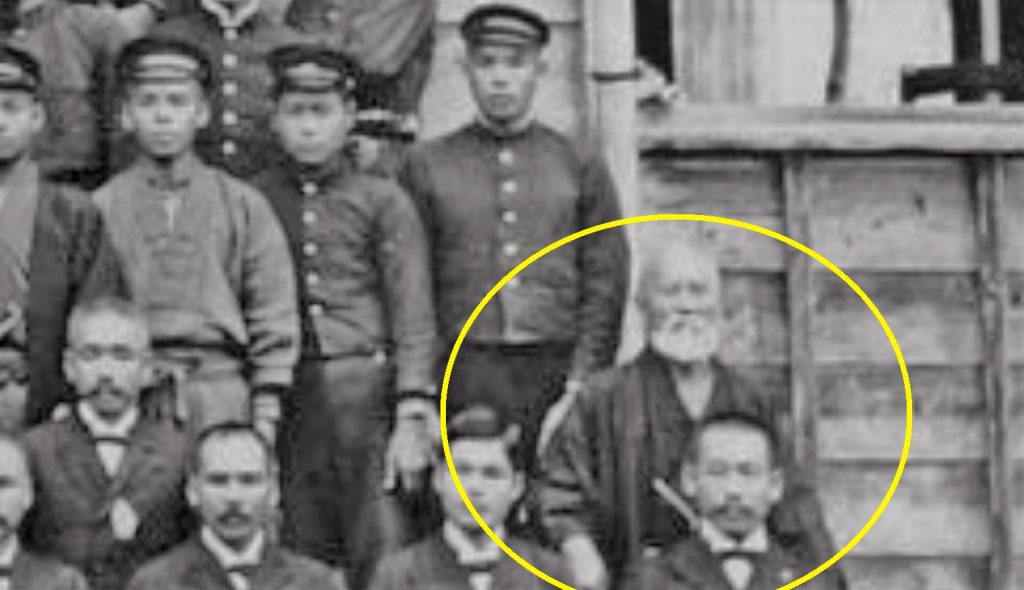In my last post I established that judge and politician Tōma Jūgō (1895-1971) must have attended his four-year course at Shuri Middle School between 1908-1913. At this time, karate was a mandatory school subject at Shuri middle school.
So I took up Tōma’s memoirs again to seek further snippets. And there is. Actually, tere is a whole dedicated page to it. It is as follows
“Karate as a Physical Education Subject in Secondary School”
It is interesting to note that karate was included in the physical education courses of Okinawa’s secondary school, which was unprecedented in other prefectures. There is a written record that Itosu Ankō (1831-1915) issued his written opinion to the prefectural office in 1908, requesting the adoption of karate as a physical education subject. But already before that, the Okinawa Normal School offered group instruction to all students as a mandatory teaching course for two hours a week.
From among persons who had studied at the Okinawa Normal School between late Meiji era to the early Taishō eras, Author Miyagi Sō has heard:
“Wearing haori and hakama, Itosu Ankō went to the normal school by horse, in a truly dignified manner. Like a decent person who truly lived karate, with his enormous bowlegs, he strut around in his peculiar footwork.”
During his lifetime, venerable old Itosu had something of the old-time samurai about him, and his style and appearance is the stuff of legends still today.
At that time, on proposal of venerable old Itosu, an annual karate tournament was held at the schoolyard of the Okinawa Normal School. In addition to the participation of normal school students, karate people from all over Okinawa and students from Okinawa Middle School were also invited to demonstrate martial arts, as if they presented an outlook on karate kingdom.
Ranking next to Itosu Ankō, there were Yabu Kentsū (1866-1937) and Tokuda Anbun (1886-1945) as karate instructors at normal school. At the 1st middle school there were Hanashiro Chōmo (1869-1945) and Tokuda Anbun. At the 2nd middle school there was Kyoda Jūhatsu (1887-1968), and at the Commercial School and at the police, Miyagi Chōjun (1888-1953) served as karate full-time lecturer and provided instruction.
Karate at secondary school was carried out from around the Meiji era until the Shōwa era (1926-). However, after the beginning of the 2nd Sino-Japanese War (1937-1945), karate was only carried out by the police, and before anyone knew, karate disappeared from physical education at school. This may be because physical education has become dominated by military training.

There are several intersting points in the above written record. One of the most interesting ones is is that Itosu had “enormous bowlegs.” I wonder what influence this had on the characteristics of his Naihanchi-dachi, or, as Matsumura Sōkon called it, Itosu’s small turtle stance.” What did his students make of this?
In medical terms, this refers to Genu varum, also called bow-leggedness, bandiness, bandy-leg, and tibia vara. It is a varus deformity marked by outward bowing at the knee, which means that the lower leg is angled inward (medially) in relation to the thigh’s axis, giving the limb overall the appearance of an archer’s bow (Wikipedia). In the long run, this leads to premature wear of the articular cartilage, so that with increasing age, arthrosis of the knee joint must be expected.

It has also been variously questioned how much compulsory training students at the normal school would actually receive, to which we find a satisfying answer in Tōma’s memoirs: At Okinawa Normal School, there was a mandatory karate course of two hours a week. This was a group instruction to all students.
Furthermore, not only did Yabu Kentsū (1866-1937) at normal school and Hanashiro Chōmo (1869-1945) at middle school teach karate, but at both schools Tokuda Anbun (1886-1945) also taught.
That’s all.
Biblio:
Tōma Jūgō (1895-1971): Tōma Jūgō Kaisō-roku (Memoirs of Tōma Jūgō). Tōma Jūgō Kaisō-roku Kankō-kai, Naha 1969.
Motobu Choki: Watashi no Karate-jutsu, 1932
© 2020, Andreas Quast. All rights reserved.
